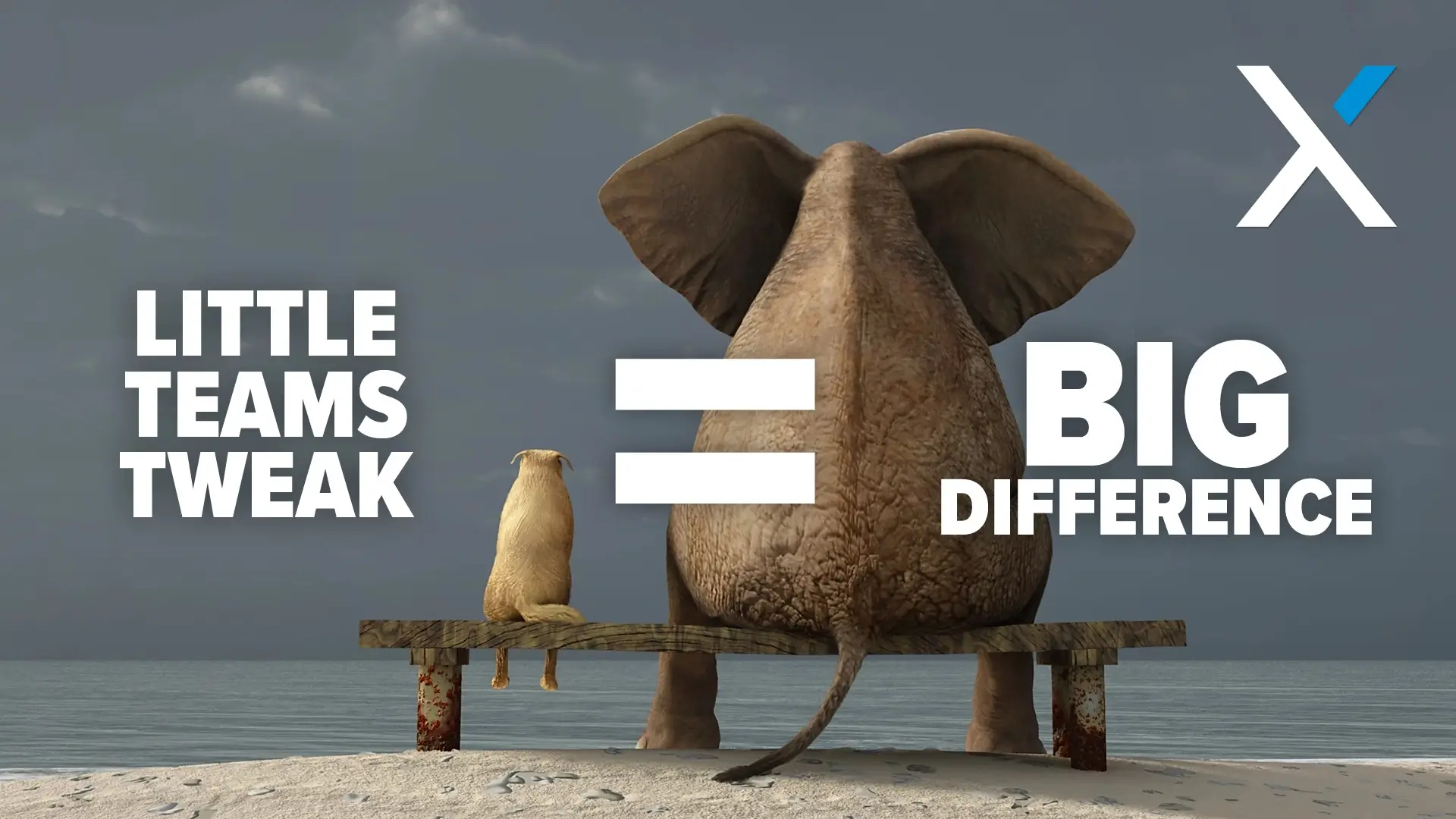(Finally!)
Continue readingWhy Spreadsheets Are Holding Your Business Back
(and What to Do Instead)
Continue readingYour Browser May Soon Launch AI Without Asking
Microsoft is betting you will like it
Continue readingRemote vs. In-Office Work: The Security Risks SMBs Can’t Ignore
The technology side of the debate
Continue readingMicrosoft is Fixing the Windows 11 Start Menu Recommendations
Finally, something that makes sense
Continue readingIs your business drowning with device overload? Fix it now
Imagine a workday where your team operates seamlessly, free from the clutter and distraction of juggling multiple devices. By streamlining technology, small and medium-sized business (SMB) owners can enhance productivity, reduce stress, and foster a more efficient work environment.
In today’s digital age, the average office worker utilizes approximately three devices daily, including laptops, tablets, smartphones, and accessories. Collectively, these gadgets can weigh around 9 pounds, which is the equivalent of carrying an air fryer to work each day.
While these tools are designed to boost efficiency, managing multiple devices can lead to device overload, and makes your business suffer.
The Hidden Cost of Too Many Devices
Having multiple devices seems like a productivity win—you can take calls on your phone, check emails on your laptop, and run client presentations from a tablet. But in reality, constantly switching between them is costing you more than you think.
Mental Fatigue: The Silent Productivity Killer
Juggling multiple devices isn’t just distracting—it’s exhausting. Each ping, notification, and screen switch forces your brain to refocus, chipping away at your concentration. Studies show that this kind of multitasking doesn’t make you more efficient; it actually slows you down and cranks up your stress levels.
Physical Strain: A Portable Pain Point
Carrying a laptop, tablet, and smartphone all day sounds manageable—until you realize you’re hauling around nine pounds of tech. That’s like lugging an air fryer everywhere you go… minus the crispy snacks. The extra weight adds up, making your daily routine more tiring than it needs to be.
Security Risks: More Devices, More Vulnerabilities
Every device you add is another entry point for hackers. If even one isn’t properly secured, your entire network—and your clients’ sensitive information—could be at risk. Plus, keeping track of who has what, how old it is, and whether it’s still doing the job? That’s another headache waiting to happen.
Streamlining Your Tech for Maximum Efficiency
Instead of wrestling with device overload, consider strategies to simplify and optimize your workflow.
Unify Communication Platforms
Instead of bouncing between apps and devices, use a platform that brings everything—email, calls, video conferencing, and messaging—into one place. Microsoft Teams or Google Workspace can streamline communication and reduce the need for extra devices.
Invest in All-in-One Devices
Convertible laptops that double as tablets, or smartphones with desktop docking capabilities, can replace multiple gadgets without sacrificing functionality. Fewer devices mean less clutter and greater efficiency.
Set Clear Usage Guidelines
Establish policies to minimize distractions. Encourage employees to silence non-essential notifications and disable non-work-related alerts during business hours. A little structure goes a long way in boosting focus and productivity.
Lock Down Security with Device Management
If multiple devices are unavoidable, a Mobile Device Management (MDM) solution is a must. MDM lets you remotely monitor, secure, and manage all connected devices, ensuring compliance with your firm’s security policies.
Cutting down on device overload isn’t just about convenience—it’s about working smarter, reducing risk, and keeping your team focused on what really matters. How many devices are slowing your firm down right now?
The Simpler Approach
Your business doesn’t need a mountain of devices to stay productive. A smarter tech strategy can cut distractions, boost efficiency, and strengthen security—while making life easier for you and your team.
Take a step back and assess your current device setup. Are there ways to simplify? The right approach to tech management keeps you focused on what really matters: delivering top-notch service to your clients.
Save Time by Auto-Launching Your Favorite Apps on Windows 11
How to set up auto launching at startup
Continue readingAn AI Tool That Could Actually Revolutionize Your Business
Introducing Windows Agent Arena
Continue readingMicrosoft Teams Updates: Organized Communication for SMBs
Running a small or mid-sized business (SMB) is already a juggling act, and effective communication shouldn’t be one of the balls at risk of dropping. Microsoft gets it, which is why they’re rolling out updates to Teams that aim to make collaboration easier and more intuitive.
Let’s talk about these new features—@mention view, favorites, and additional filters—and how they can simplify your workday.
New Microsoft Teams Features
Tackling the “I Can’t Find It” Problem
Ever spent too much time scrolling through Teams, trying to find that one message you were tagged in days ago? Frustrating, right? That’s where the new @mention view comes in. This feature pulls every message where you’ve been mentioned into one tidy list. No more hunting through endless channels or chats—you’ll know exactly what needs your attention and can tackle it without losing momentum.
Favorites: Your VIP Lounge for Teams
Think of the new favorites section as your VIP lounge in Microsoft Teams. Here, you can pin your most important chats and channels so they’re all in one easy-to-reach spot. Whether it’s a project thread, your team’s daily stand-up chat, or a key client conversation, you can stop wasting time searching and start focusing on what matters most.
Want more customization? Microsoft is also introducing custom sections, allowing you to group conversations and channels based on projects, clients, or whatever suits your workflow. It’s like creating your personal filing system—but for your digital workspace.
Filters and Controls: Because Time Is Money
The new filters and controls are like having a superpowered inbox. You can sort by “Unread,” “Chat,” “Channels,” and even “Muted” conversations, letting you zero in on the messages that actually matter. These tools are a lifesaver for anyone who’s ever felt overwhelmed by the sheer volume of notifications.
Imagine being able to scan only the unread messages from your top clients while ignoring non-urgent chatter in other channels. It’s that kind of efficiency that makes a real difference to your productivity.
Why These New Teams Features Matter
Here’s the thing: Communication breakdowns are productivity killers, especially for SMBs with limited resources. These updates make Teams more intuitive and user-friendly, ensuring you can spend less time managing conversations and more time growing your business.
- @mention view ensures you never miss an important message.
- Favorites and custom sections keep critical chats at your fingertips.
- Filters and controls cut through the noise so you can focus on priorities.
Better organization and faster access to information mean fewer distractions and smoother workflows.
When Can You Expect These Changes?
Microsoft plans to roll out these features in public preview by November 2024. Whether you’re on desktop, iOS, or Android, you’ll soon have these tools at your disposal. Threaded conversations are also in the pipeline, with testing set to begin later this year and full availability by mid-2025.
Final Thoughts
For SMB owners, time and efficiency are critical. These updates to Microsoft Teams are designed to make your day-to-day communication smoother, less chaotic, and more productive. So, as you strategize for 2024 and beyond, consider how these tools can help your team stay connected and focused.
Ready to streamline your communication? Keep an eye out for the updates—they’ll be worth the wait.
The Readiness Paradox: Your IT Might Be Holding You Back
How to Close the Gap Between IT Confidence and Readiness
Continue reading








